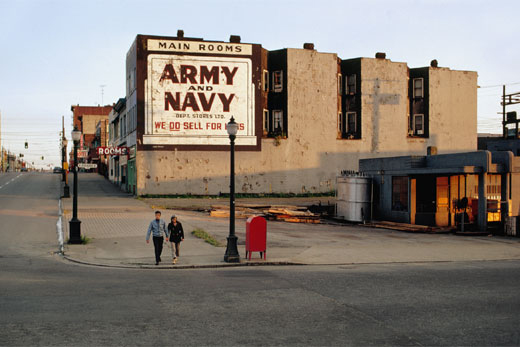
I’m asked quite frequently to lecture on nonfiction long form journalism, of which I do a lot. The picture here and below is a sub-lecture in itself. I remain bad for forests in what I do, because for these more intense features – like the one I’m presently writing about Fred Herzog for Canadian Art, I find it impossible to actually write without all my research laid out for visual access. Six monitors would probably work as well, but there are cost issues associated with that.
What’s notable about this is that for all the research, at this stage in the process the article is quite entirely unwritten. I’ve populated this information environment, but nothing has really happened in it. I liken what happens next more or less to how one of Herzog’s most ardent collectors desribed the photographer’s own work. Herzog knows how to construct a scene, or a setting (in the compositional sense), but ultimately he has to wait in that environment to encounter the content as it happens, what Cartier-Bresson would have called the perfect moment.
I’m not sure every Herzog picture incorporates that blend of construction and encountering, but many do notably this one below, the shooting details of which I’ll describe in the piece.

Of course, one thing I’m quite sure Herzog (or Cartier-Bresson) never did in that waiting period between construction and encountering is blog about the experience. But such is the self-exposing, content-hungry nature of our networked day and age.
In any case, on the more prosaic level, what’s laid out here are each of my interviews plus an index of everything quotable organized under topical or thematic headings. As I start to write, this messy constructed environement is relied on to release content for me to encounter.
Or at least, that’s the best laid plan.


